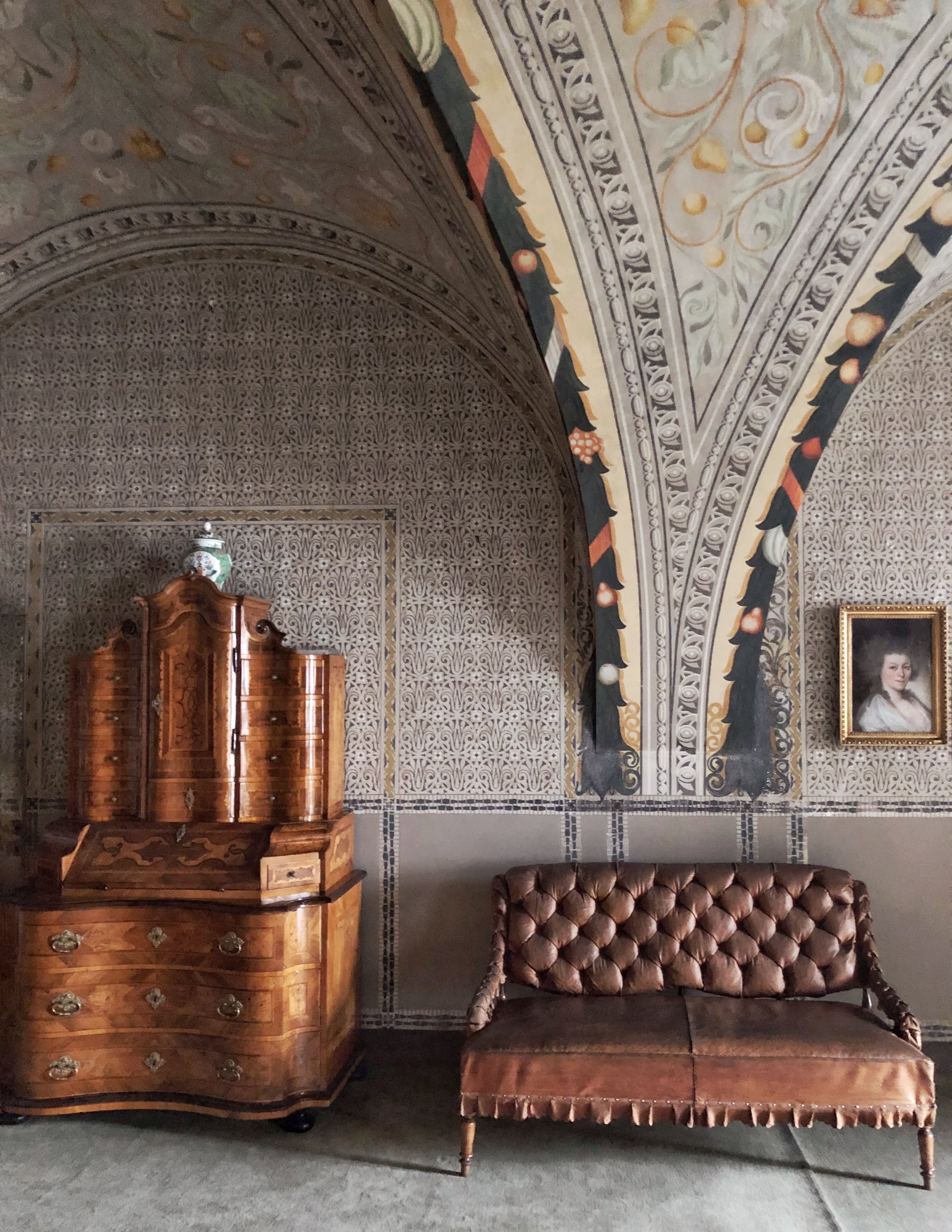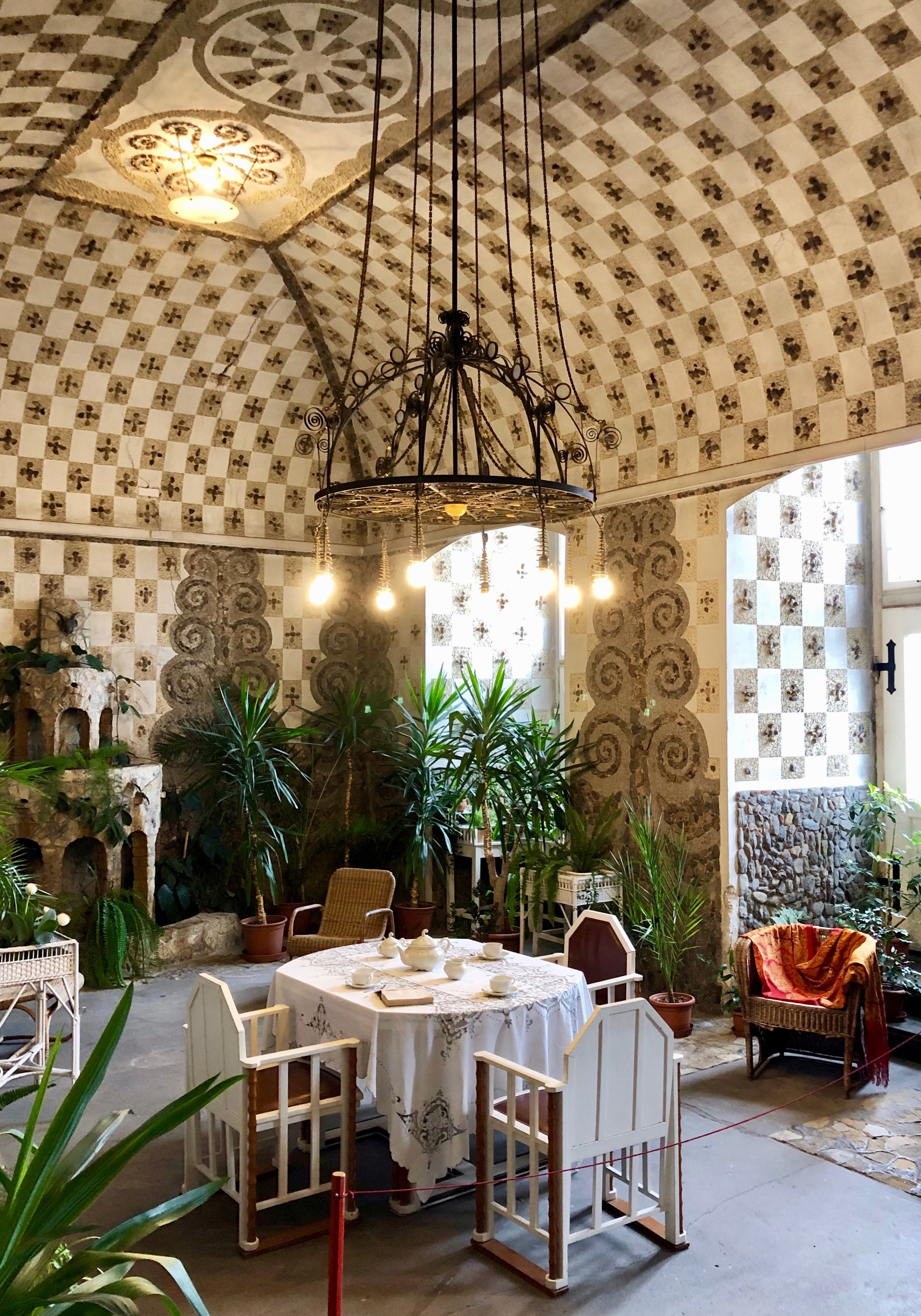Nové Město nad Metují: The Czech Chateau You Have Never Seen that Is a Design Lover’s Dream
From the outside, the chateau in the small Czech town of Nové Město nad Metují is your standard issue medieval pile. It was built in 1501 as a Gothic style fort and the façade shows it.
The approach is nice. To visit, you meander through a charming garden guarded by 22 dwarves and cross a covered bridge straight out of Grimms’ Fairy Tales. But curb appeal is not the chateau’s strong point.
The interiors, on the other hand, will knock your socks off. In the early part of the 20th century, leading Czech architects , Dušan Jurkovič and Pavel Janák transformed a derelict interior into a design lover’s dream. New owners, Josef and Cyril Bartoň-Dobenin, hired the architects in 1909 to modernize the chateau for family living and gussy up the existing medieval decoration and Baroque detailing acquired over the years.
Jurkovič and Janák’s vision turned the old components upside down. They brought in the best artists of the day to execute dazzling pattern filled spaces filled with custom ceramics, carpeting, lighting and incredible wall treatments. No surface was spared. Even the radiators are silver. Their restoration was not complete until 1935.
The end result is an exuberant mash up of motifs from all of the important early 20th century styles. Elements from the Arts & Crafts movement, Weiner Werkstätte, Art Deco, Art Nouveau and Functionalism are built on an existing Baroque and medieval frame. You have never seen anything like it. My eyes popped out of my head when I toured the chateau last fall with the Decorative Arts Trust. Have a look at my favorite rooms.
Baroque Bedroom
The “Baroque Bedroom” is dominated by original 17th century frescoes that Jurkovič and Janak restored. The bedroom’s furniture was made in 1912 to match a surviving Baroque bureau. It’s one of the few rooms where original elements command the design.
Coffer Room
Unlike the Baroque Bedroom, the “Coffer Room” has no original elements. Jurkovič installed a nature-inspired ceiling, textiles, and lighting with a distinct Arts & Crafts feel that recalls medieval times. An appropriate choice because William Morris, the founder of the Arts & Crafts movement, was inspired by the Middle Ages. The walls are made of embossed leather. Jurkovič added the stucco ribs and painted the ceiling in 1918.
Son’s Bedroom
The son’s fantasy bedroom is another delight, evoking visions of Robin Hood and King Arthur (or their Czech equivalents). Perfect for a young knight in shining armor.
Zodiac Room
An informal dining room is dubbed the Zodiac Room because its bespoke carpet is modeled after an astrological chart. All of the decoration in this room dates from the first half of the 20th century. Pavel Janák designed the furnishings.
Bohemian Herbarium
The Bohemian Herbarium, completed in 1918, is so named for its many floral motifs. The wainscot below the painted vaulting is a woven tapestry. The extraordinary stove at the rear is by Helena Johnová, the founder of modern Czech ceramics. She set her kiln up on site for a year during the renovation.
Formal Dining Room
Jurkovič also entirely designed the formal dining room. The walls of are covered in parchment inlaid with gold thread. Meissen and Chinese porcelain dot the space. My photo of the Bohemian glass chandelier does not do it justice.
Winter Garden
Downstairs in the Winter Garden, or conservatory, the walls and ceilings are covered in mosaics created in part with pebbles sourced from the nearby river Metuje. The swirly pattern is much like the spirals seen in Gustav Klimt’s mural at the Palais Stoclet, a Weiner Werkstätte icon . The rectilinear white chairs remind me of Charles Rennie Mackintosh, a designer very sympathetic to the Weiner Werkstätte style.
Background
As inventive as these interiors are, I am equally captivated by the owners’ history. Cyril’s brother Josef and his wife lost the chateau to the communists in 1948. They continued to live there under state rule until their death, while their son and the rest of family fled to Canada. Tragically they said they were too old to go.
Their son never again discussed Czechoslovakia, not dreaming that his own son would one day own his former family home.
But back in 1992, the son, Josef Marian Bartoň-Dobenin, awoke one day in Canada to learn that he was the proprietor of both the chateau and all of his family’s former textile business. At the time he was working in airlines and his wife was a legal secretary. Apparently that’s how property restitution works in the Czech Republic. Reminds me of the lotto. But that’s another story…
All photos by Lynn Byrne

















